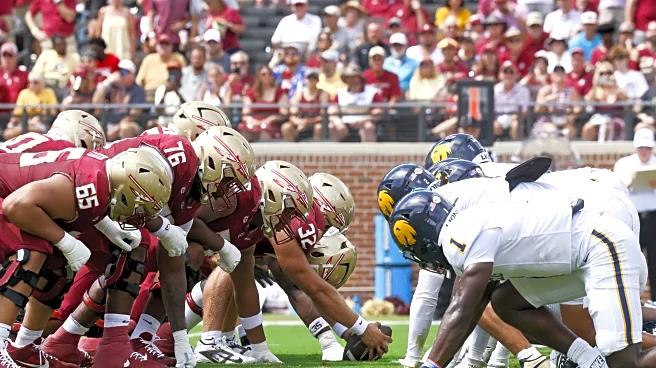
In week one’s massive win over the Alabama Crimson Tide, the Florida State Seminoles offense only utilized their starting five lineman.
Week two was a different story.
The Seminoles raced out to a 21-0 lead in the first quarter before coasting to a 77-3 blowout of the East Texas A&M Lions. In the victory, FSU deployed 11 different linemen throughout the game. It was a nice change of scenery for fans — and crucial for development moving forward — to see young linemen get playing time.
Each week, Tomahawk
Nation will take a look at FSU’s PFF Grades along the offensive line (and blocking tight ends), offering insights into the numbers and performances. Please note that any player receiving minimal snaps may be excluded due to the small sample size.

- The total score is an average of the run and pass blocking scores. The scores will be weighted more towards where the player saw the most action.
- PFF isn’t a perfect scoring system. The graders cannot know 100% of the assignments on each play.
- PFF CFB Scale: 90-100 Elite, 85-89 All-Conference, 70-84 starter, 60-69 Backup, <60 Replaceable
Florida State offensive line performance takeaways with @Ricobert11:
- Very good pass blocking grades, though Hansen wasn’t great.
- FSU’s run blocking scores for the second straight week were average. This worries me for a few reasons:
- First, the quality of the opponent: ETAMU has no one who would break into FSU’s defensive front seven. Yet you’re run blocking grades were 50s to low 60s. If you got credit for being a 50s/60s run blocking unit against a stout Alabama front, you get demerits for producing roughly the same against a bad front.
- Second, you had trouble moving the ball in short-yardage goal-line situations. Granted, you only had four redzone runs on the day, but FSU had negative EPA on two of three goal line runs and a fourth-down stop before getting a penalty to bail you out.
- Overall, despite the average run blocking scores, you were successful (EPA > 0) on 9/17 rushes with your first team (53%). That is a good and expected result against this opponent.
- FSU is executing better this year than last, no doubt. But we would be well reminded that the structural features of FSU’s rushing game this year is doing a lot of work. Consider the jet motion/zone-read/play-action play that has been FSU’s base this year. On plays where defenses load the box, play-action bombs to Deuce and jet handoffs have killed them. But on plays where safeties stay back, FSU has to make its living off inside zone and keepers. Something to keep in mind when we play actual defenses again.












